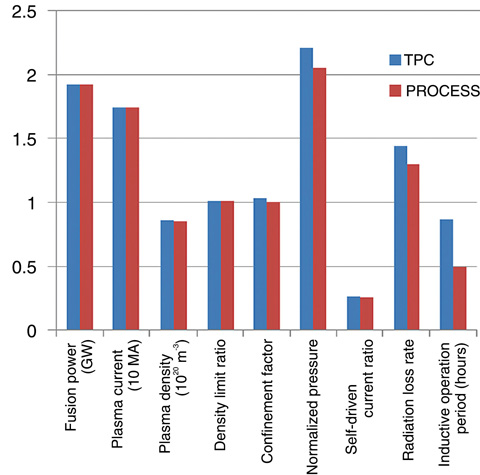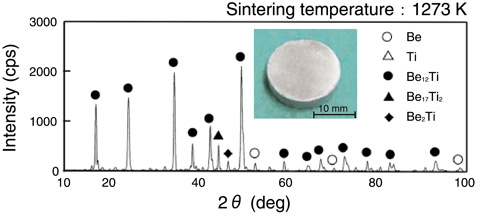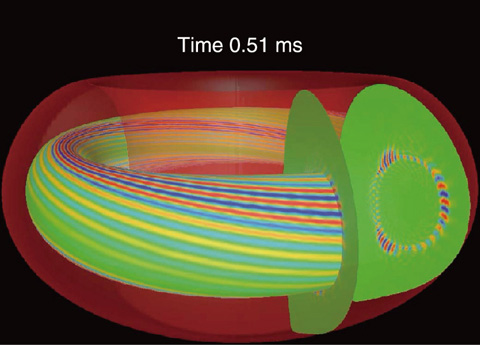
Fig.4-10 Comparison of tests by JA and EU system codes (JA: TPC, EU: PROCESS)

Fig.4-11 Appearance and result of X-ray diffraction analysis of a plasma-sintered specimen

Fig.4-12 TAE mode driven by alpha particles in ITER steady state scenario
The International Fusion Energy Research Centre (IFERC), one of the Broader Approach activities, supports three subprojects: (1) the DEMO Design and R&D Coordination Centre, (2) the Computational Simulation Centre (CSC), and (3) the ITER Remote Experimentation Centre. These activities are a joint collaboration between Japan and the EU extended over the 10 years starting from 2007. The IFERC is located in Rokkasho, Aomori prefecture and has the mission of contributing to ITER and an early realization of fusion energy. With the recent operations in the DEMO R&D Building and the supercomputer, the IFERC project shifted in 2012 from a preparatory phase to an actual research phase.
An integrated project team, consisting of the EU, JA home teams, and the project team, has been established in the DEMO Design activity in IFERC. Joint work has been performed on divertor, in-vessel components, operation scenarios, and system codes. Benchmarks of system codes show good agreement, except for the inductive operation period, as shown in Fig.4-10. The physics model underlying this deviation is under investigation.
As for DEMO R&D activities, R&D for the DEMO blanket is progressing steadily in five tasks: SiCf/SiC composites (T1), tritium technology (T2), materials engineering (reduce-activation ferritic/martensitic steel) (T3), advanced neutron multiplier material (T4), and advanced tritium breeder materials (T5). These tasks are based on the common interests of the EU and Japan in DEMO blanket development. One of the most important recent results is the feasibility of using a newly developed plasma sintering method to synthesize a beryllium intermetallic compound (Be12Ti) for use as an advanced neutron multiplier material, as shown in Fig.4-11. Investigations to determine the optimum synthesis conditions continue, including efforts to reduce the amounts of unreacted beryllium and other undesirable compounds. Furthermore, the DEMO R&D Building has been completed recently as a radioisotope (RI) handling facility. There, researchers from various fusion-blanket fields can participate in collaborative research. This facility will stimulate significant synergetic interactions among researchers engaged in R&D activities for the DEMO blanket.
In the CSC, the supercomputer with 1.52 PFlops (1.237 PFlops in the Linpack test) has been in operation since last January. The Light House Project was performed through the middle of March to explore the frontier of magnetic fusion confinement. An example of the results is shown in Fig.4-12, which has been obtained by a simulation of alpha particle transport in the ITER under a steady state scenario. It is found out that instabilities driven by alpha particles do not seriously degrade alpha particle confinement.
With these new facilities in operation, new research results are expected to increase.